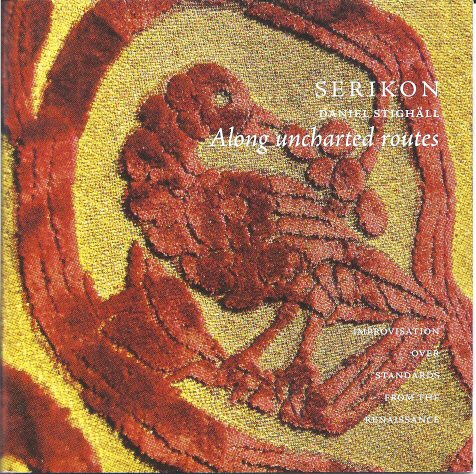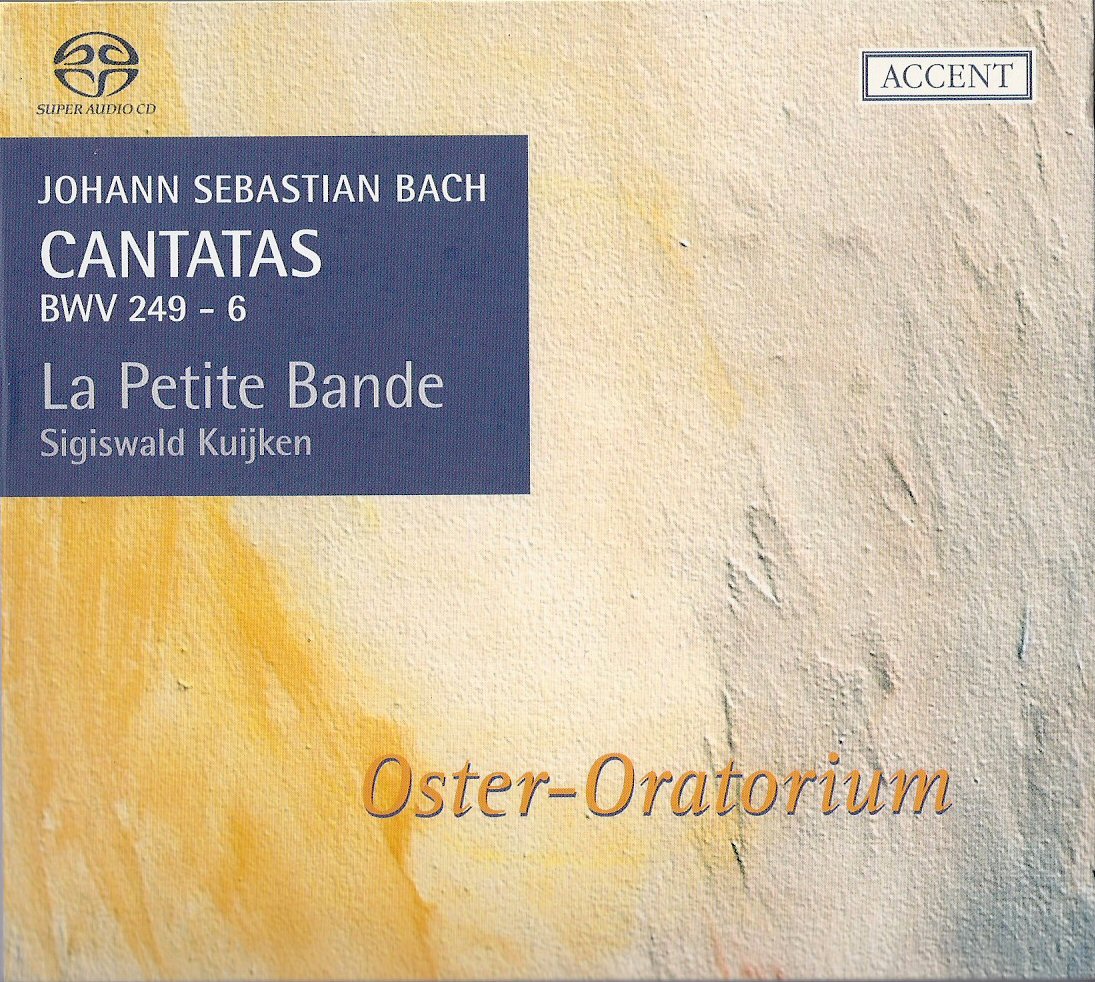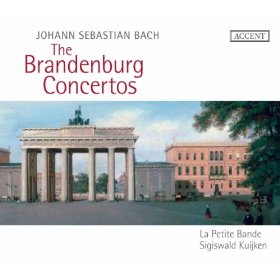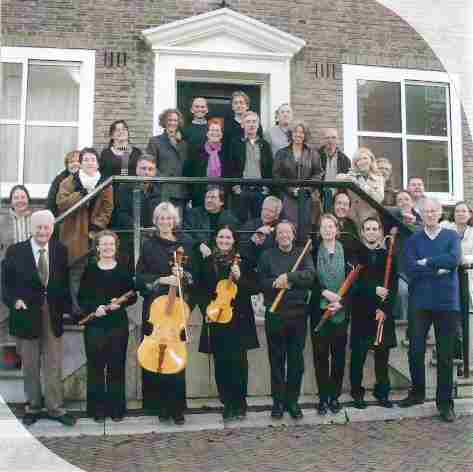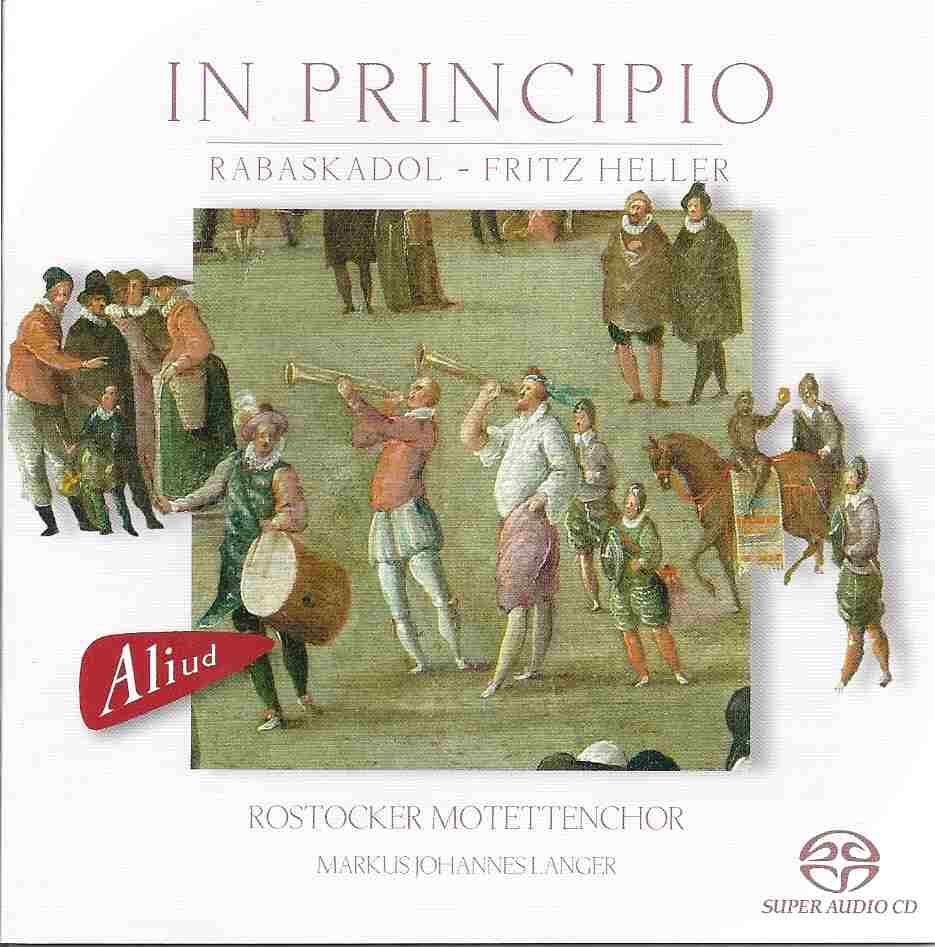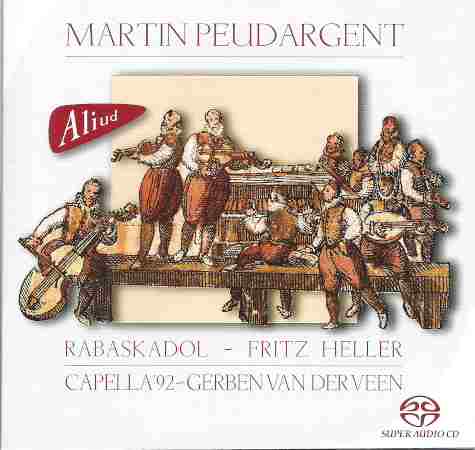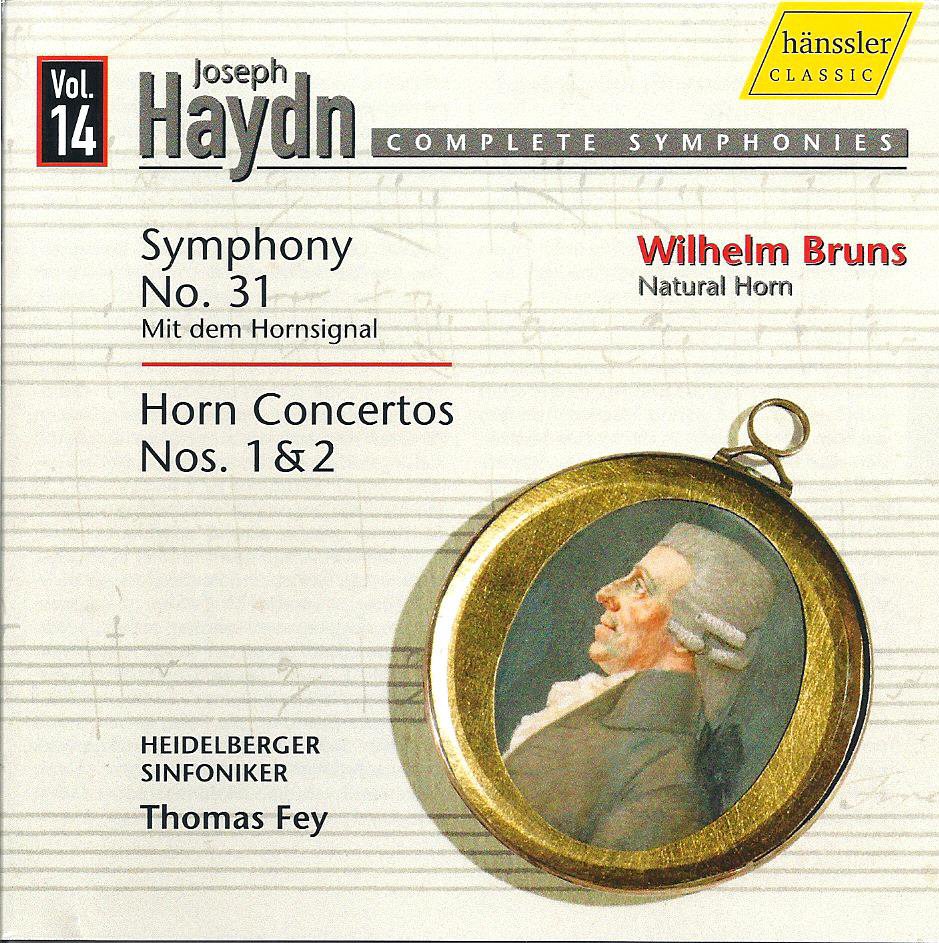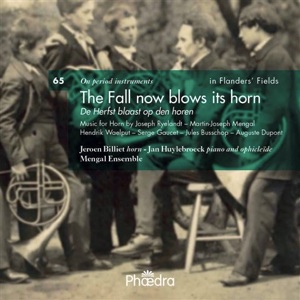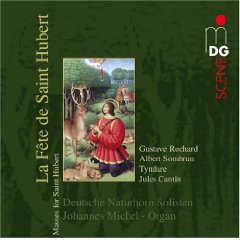The Royal Brussels Hornsound: Flemish Romantic Music on Period Instruments. www.fugalibera.com; Fuga Libera FUG 550, 2009. Featuring Luc Bergé and Jeroen Billiet, horns, with Bart Cypers, Frank Clarysse, Mark De Merlier, Bart Indevuyst, Miek Laforce, Bert Vanderhoeft, Johan Van Neste, horns; Gunter Carlier, Joost Swinkels, trombones; Diederil De Rouck, conductor. Recorded June 2007, Chapel of St. Vincent Cloister, Gijzegem, Belgium.
Repertoire: Grand Octuor pour six cors et deux trombones, Martin-Joseph Mengal; Octuor pour huit cors chromatiques, Léon Dubois (1859-1935). Mengal instruments: Horns: Jiracek copy of Courtois, Paris ca. 1800; A. Jungwirth copy of Raoux, Paris ca. 1795; Guichard, Paris ca. 1830; Courtois neveu, Paris ca. 1820; Jungwirth copy of Courtois, Paris ca. 1820; trombones: after Hofmeister ca. 1800. Dubois horns all built by F. Van Cauwelaert, Brussels: horn in Bb “Liègeois,” ca. 1900, 1890; horn in F “Gantois,” 1900, 1890, 1920; two-piston “Gantois” in F, ca. 1870.
This recording is the result of recent research in the history of the horn and horn-playing in Belgium. Heading the research is Jeroen Billiet whose recent dissertation,
200 Years of Belgian Horn School? A Comprehensive Study of the Horn in Belgium 1789-1960. (
www.corecole.be. 2008), is a seminal work on the subject. This recording features Billiet’s horn teacher at the Royal Conservatories in Ghent and Brussels, Luc Bergé, and several other colleagues performing larger horn ensemble music from two distinct historical periods of horn repertoire—the natural horn of the early to mid-1800s and the valved horn around the turn of the 20
th century.
Martin-Joseph Mengal (1784-1851) was born in Ghent and made his way to Paris in 1803 to study the natural horn at the Paris Conservatoire where his teacher was Frédéric Duvernoy. He went on to a respectable performing career in several ensembles in and around Paris, and then moved into conducting. In 1835, he returned to Ghent to become the first director of the Ghent Concservatory. Mengal’s Grand Octuor was composed roughly 1817-1820. The style is clearly patterned after the music of his composition teacher Antonin Reicha, and is reminiscent of the music of his classmate at the Conservatoire, Louis-François Dauprat. For those who know Dauprat’s music, the resemblance to his monumental Sextuor is obvious, even to the six movements in similar structures and pacing to (fast-minuet-variations-slow-minuet-fast). One noteworthy difference is Mengal’s more conservative approach to the use of crooks, using only B-flat alto, F, and E-flat horns, a far cry from the armload required by the ensemble in Dauprat’s work. This use has the effect of perhaps limiting some of the harmonic choices made, and the overall timbre is more consistent and less varied. Still, it is clear that Mengal took one of Dauprat’s primary goals, to write good music for horns, to heart and produced a wonderful substantive work for horns. The average length of the movements is five minutes, making the total composition a major, 30-minute piece.
The performance of this piece on this recording is outstanding and provocative. All performers are in clear command of their instruments, and the sounds produced on the French instruments, both originals and reproductions of Raoux, Courtois, and Guichard instruments of the time, are bright, compact, and forthright. There are no apologies made for stopped notes, which I find gratifying on a personal level as this is how the composers knew it would sound when they wrote it. Luc Bergé’s leadership is apparent, but the confidence and maturity of all performers is also obvious. The texture is a bit different with trombones in the mix. The character of the low range is a bit brighter and (obviously) more even than if longer-crooked horn were used (as Dauprat did). As many know, creative use of low crooks would make all that the trombones play possible on horns, but in this case, with the larger numbers, using trombones is a path of lesser resistance. In all, this is a great step toward reviving Mengal’s previously unknown gem.
Léon Dubois (or Du Bois, 1859-1935) was a Belgian composer, organist, and conductor. He won the grande prix de Rome in 1885 and subsequently became music director of several Belgian opera houses. Later, he became director of the Brussels Conservatory in 1912. The three movements of his Octuor for eight valved horns were composed separately, in 1885, 1888, and 1894 respectively, and are clearly influenced by the German practice of using eight horns in orchestral music of the time. They are dedicated to the horn teacher at the Brussels Conservatory at the time, Louis-Henri Merck, an important figure in the evolution of Belgian horn playing.
These are serious compositions for octet, and at 5:00+ for the first two and 9:00+ for the last, the three make a strong statements regarding the confidence that Dubois had in the hornists around him. Despite being written separately, there is a melodic connection between the first and third works. Both are on the faster, heroic side, and the middle octet is certainly a slower, lyrical contrast at first. The character of the first is a sort of romping waltz with contrasting trio. The second begins lyrically but builds in intensity to the end. The third begins with alternating fanfares and lyrical phrases, giving way to a sort of majestic hunting style in 6/8 that occasionally revisits the slower lyrical style. The movement ends the way it began, with a heroic flourish. The overall style is quite mainstream Romantic, with some interesting harmonic twists, but nothing overly adventurous, despite the composer’s availing himself of the chromatic instruments.
For this piece, Bergé and his colleagues all use original horns built ca. 1870-1920 by the well-known Brussels maker Van Cauwelaert. There are several models in use, including Van Cauwelaert’s “Liégeois” model, built in high B-flat, with a lighter sound, and his “Gantois” model, built in F with two and three valves, and a bit of a compromise between the smaller-bore French and larger German types. Since the music is constructed mostly in two four-voiced choirs, the mix of lighter horns on top with more full-bodied sounds below is a wonderful blend, and the connection to the brighter, more compact natural horn sound of the past (and the Mengal piece) is obvious. Once again, the performers are clearly comfortable with these instruments and play with authority—it is a glorious sound on these glorious pieces. Dubois’ Octet is published by Robert Ostermeyer Musikedition (www.corno.de) and both works, the composers, and the horns are described more fully in Jeroen Billiet’s dissertation. Billiet is also one of the performers on this terrific CD.

De Herfst blast op den horen/The Fall now blows its horn. Klassieke Concerten-Phaedra CD,
www.phaedracd.com. In Flanders Fields collection 65, 2010. Jeroen Billiet, horn; Jan Huylebroeck, piano and ophicleide; the Mengal Ensemble. Recorded Pomme Charelle, Maldegem, Belgium, March 2010.
Repertoire: Sonate in E, op. 18, by Joseph Ryelandt; Romance, by Martin-Joseph Mengal; Allegretto, by Serge Gaucet; Chasse, by Jules Busschop for four horns, keyed trumpet, and ophicleide; Romance, by Hendrik Waelput; Sixième Duo pour cor et piano, by Martin-Joseph Mengal; Intermezzo-Barcaolle, by Auguste Dupont; Zomeravond (Summer Evening), by Joseph Ryelandt for horn quartet.
Instruments: Billiet Horns: Courtois frère, Paris ca. 1830 (Mengal, Busschop); Willson CS251 double horn for rest; Piano: Bösendörfer Imperial, 1885.
The Mengal Ensemble: Jeroen Billiet
Bart Indevuyst (Jiracek model, Bohemia/Alexander 103)
Mark De Merlier (Courtois Neveu Ainé ca. 1825/Kruspe Erfurt ca. 1930)
Frank Clarysse (Jungwirth model after Courtois/ Alexander 103)
Steven Bossuyt (keyed bugle in B-flat, Guichard, Paris ca. 1840)
Jan Huylebroeck (11-keyed ophicleide in C, Gautrot Ainé no. 507, ca. 1865)
This recording is another result of Jeroen Billiet’s recent dissertation,
200 Years of Belgian Horn School? A Comprehensive Study of the Horn in Belgium 1789-1960. (
www.corecole.be. 2008). This time, solo music is featured with a few chamber works, and Billiet himself is the featured performer. The repertoire is as interesting and provocative as the performances.
Joseph Ryelandt (1870-1965) composed his Sonata for valved horn in E and piano in 1897. There are two movements, the first of which is slow, dark, and lyrical, with an almost modal feel to the harmony. The second movement begins with an aggressive flurry of activity, giving way to a longer lyrical section that gradually builds in intensity, peaks and then starts over again, eventually finishing very gracefully. The piece is very chromatic in melody and harmony, contributing to a weltschmerz that is in keeping with the time in which it was written. At thirteen minutes, this sonata is a substantive recital piece.
Martin-Joseph Mengal’s Romance began its musical life in the 1810s as the second part of his first horn concerto but was arranged around 1900 as a separate movement for horn and piano by Ghent horn teacher Charles Heylbroeck (1872-1945). One can hear the Parisian salon influence, the same found in Dauprat. The piece has a beautiful melody wonderful pacing.
Allegretto by Serge Gaucet (1866?-after 1914) was composed around 1900 and dedicated to Liège horn teacher Mathieu Lejeune (1859-1935). Beginning with a flashy hunting horn figures and some nice echo effects, this two-minute piece follows through with a steady build to an energetic ending.
Jules Busschop (1810-1896) wrote his Chasse for keyed bugle, four natural horns in two different keys, and ophicleide around 1840. The piece starts slowly, but soon the rousing hunt begins. The mix of timbres is warm and wonderful, and this well-crafted three-minute piece is almost over too soon.
Hendrik Waelput (1845-1885) composed Romance for horn and orchestra for Ghent horn teacher Jean Deprez (1844-1901). Later, the piece was arranged for horn and piano and it became a popular examination piece at many Belgian conservatories. With its beautiful long lines, it is easy to see why it was popular.
The Sixth Duo for horn and piano by Mengal (1784-1851) has basically three movements: a substantial Allegro, an interesting theme with four variations, and a quick finale. At a total timing of over 20 minutes, the piece as a whole becomes a major recital piece. Though somewhat more original and less reminiscent of Dauprat and Gallay, the style is still well within what was expected in mid-19th-century salon performances. The first movement tends to ramble a bit, but the variations of the second movement are very entertaining in their variety and technical demands, especially the final can-can. The finale is both fiery and lyrical in all the right ways, and a great ending to this major work.
Auguste Dupont (1829-1890) composed his Intermezzo-Barcarolle for his colleague at the Brussels conservatory, Louis-Henri Merck (1831-1900), around 1880. The Intermezzo begins dramatically with horn and piano separately, and eventually come together for a calmer but eventually passionate section. Around the middle of this eight-minute piece, the horn has a fanfare-filled soliloquy, followed by more lyrical outpouring. Finally, the first lyrical theme returns for a closing visit and the piece ends quietly and gracefully. This is a wonderful solo with lots of “meat on its bones.”
The final selection on this terrific CD is another work by Joseph Ryelandt, Summer Evening for horn quartet. This previously-unknown work was re-discovered by Ulrich Hübner. Composed around 1900 for four valved horns, the work is appropriately sentimental, a satisfying ending to a very satisfying recording.
As the source for most of the biographical information provided above, Jeroen Billiet’s program notes are brief but thorough in presenting these previously little- or unknown works. His commitment to revive these works by these Belgian composers is much appreciated. Also much appreciated are his performing capabilities on both valved and natural horns. One supposes that some of the valved horn works would deserve on of the Belgian-built horns, e.g., by Van Cauwelaert, that Billiet himself has demonstrated considerable prowess on the Royal Flemish recording reviewed above. Regardless, his performances and those of his colleagues are spectacular. Buy this one for the historical perspective, the repertoire, and the performances.
-- Jeffrey Snedeker, Central Washington University
Central Washington University
Ellensburg, Washington
